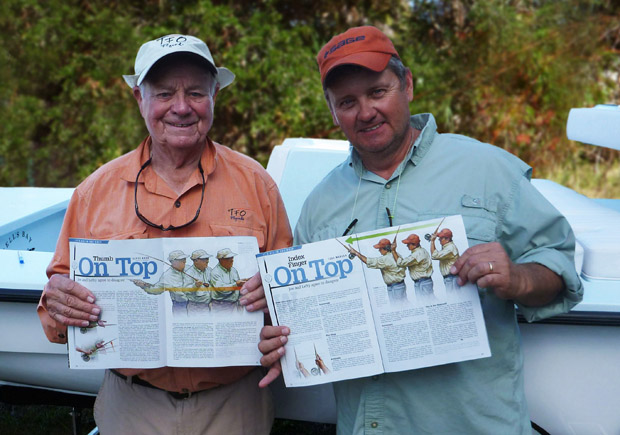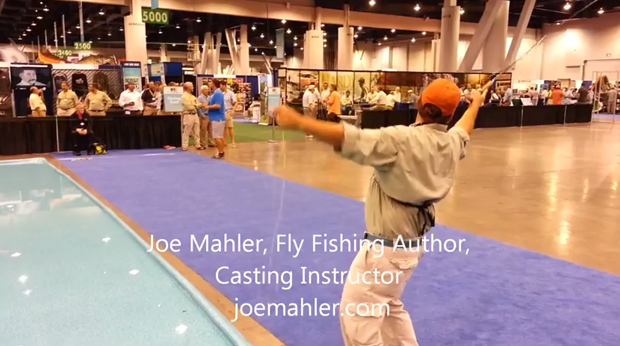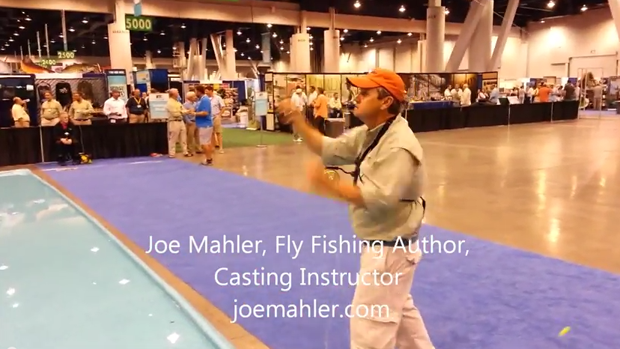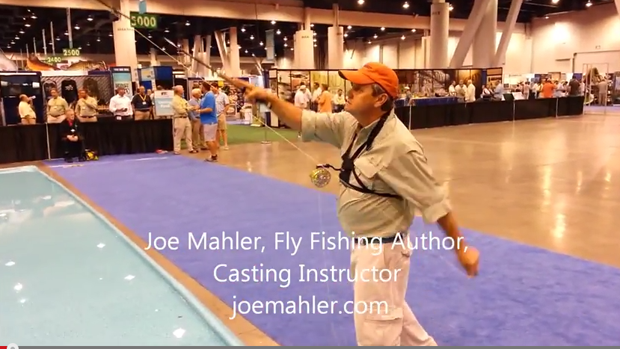Joe Mahler’s casting technique might be your ticket into the sport of fly fishing, or out of the too short, too late, no catch syndrome
[dropcap]A[/dropcap]s an all-in adoptee of Mahler’s fly casting technique, I’ll have to brag it up with a wholly biased take because it has added to my casting proficiency, requires less of my physical input, compliments the occasional need for more distance, bettered my catch results, and most importantly, allowed me to fly fish again without shoulder pain.
Let’s look at what Mahler’s finger cast is all about

This is an illustration by Joe Mahler showing the finger grip versus the conventional thumb grip. Go to his Website.
He starts out with four justifications for using his unconventional casting method. He names and ranks them as follows: Leverage, The Stop, Attitude, and Accuracy.
The first hurdle for the uninitiated is that the index finger lines up with the handle. The thumb is not the rod’s courier. Joe said: “The index finger on top is a cornerstone of my casting style.”
Watching Joe, I’ve learned to slide my hand down the handle so a portion of my palm is atop the reel. It seems to improve the lever effect, and leveraging is exactly what is happening on a cast using his method.
Most important is Leverage
Your fly rod is a lever and your hand is the tool that engages the lever. The advantage of the index finger over the thumb, you will quickly note, is that it’s longer and it improves the lever’s performance with less operator effort.
A natural tendency on the cast, with the finger lined up with the handle, is to pressure the handle with the index finger’s bone that is furthest from the palm. If I recall correctly, Joe refers to the latter action as a pushing a button.
SIDEBAR: Fingers don’t have muscles, the forearm muscles engage the tendons that are connected to the phalanges (bones).
People who have a tendency to be critical of anything new to them, almost always say, “Well, you can’t cast a 12-weight using a finger.” Unfortunately for them, the higher weight rods cast even better using the afore described method, which even shocked me.
SIDEBAR: Fingers don’t have muscles, the forearm muscles engage the tendons that are connected to the phalanges (bones).
The second most important is The Stop
Everyone, no matter their casting style, will agree that the backcast is the underpinning of a good cast. Not done correctly invites misfires.
The backcast, with the finger lined up with the handle, cannot be flawed by having the rod tip go too far back because your wrist won’t allow it. It can’t bend 180 degrees.
With the thumb cast, the wrist can easily let the tip go too far.
The third element is called Attitude
Here, Joe’s difference from the thumb cast performance is most notable, as well as, more user friendly. A thumb cast Mahler says is hammer-like; up to down. The finger cast is like pushing against a wall or door – stopping the forward cast at eye level and aimed at the target; gun-like with your finger as an AR-10 upper’s scope.
The last most important is a real definer, Accuracy
The analogy used here is that you can shoot straighter with a rifle than with a pistol. The index finger on top cast – pointing at the target, produces better accuracy because it straight tracks. This is absolutely true when the demand for a long cast comes into play. Try it.
Using the thumb cast on long distance efforts can produce inaccuracy m more readily than with the finger cast.
Last cast
Joe has an interesting point regarding finger versus thumb. If you were asked to feel the texture of something would you use your thumb? No, your fingers. The better sensitivity of a finger is DNA locked in with humans. And yes, that translates to better casting when you use your index finger.
I believe in the finger cast because it is very efficient.
Joe says he uses it in teaching because it makes his job easier and it moves a beginner out of that status faster.
Here’s a few YouTube screenshots shots of Joe casting at fishing show. He’s actually demonstrating a reel-holder vest pack. It shows his technique, although a little grainy. Notice where he grabs the handle – well down on the reel.






